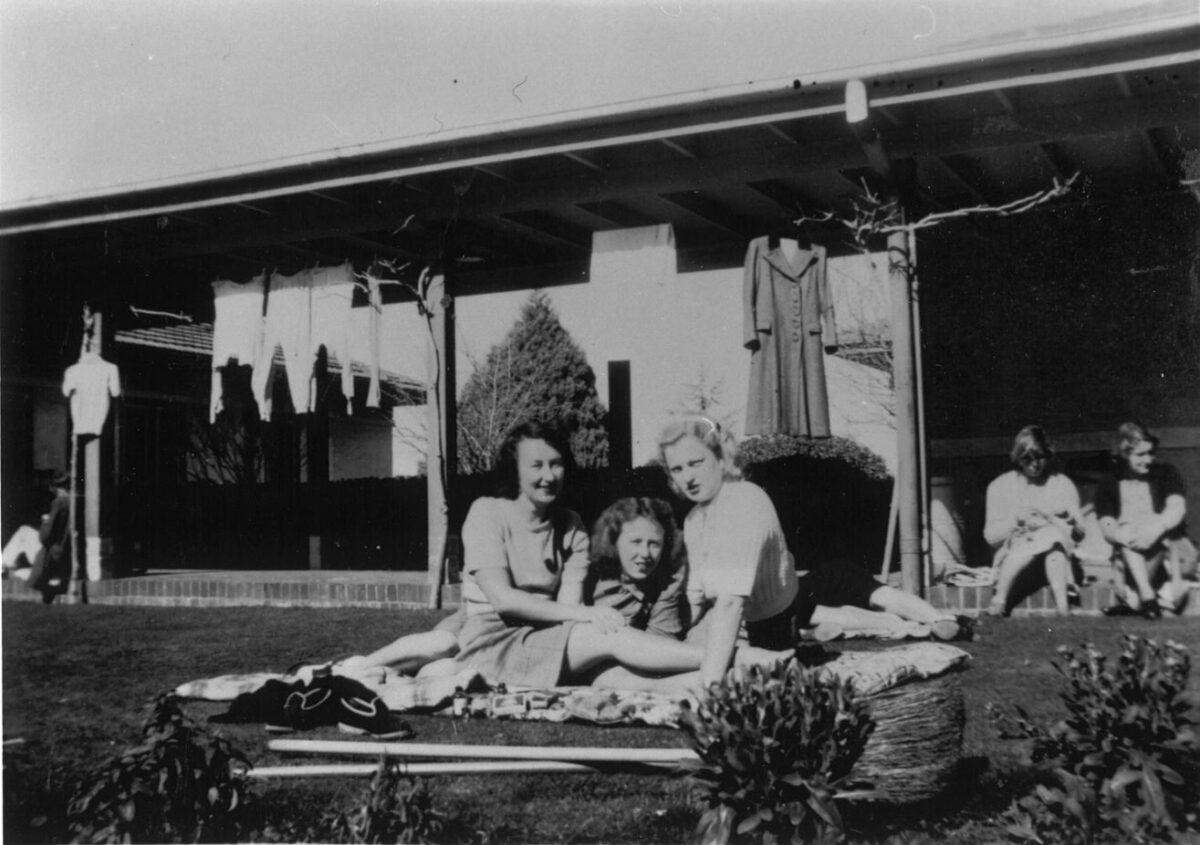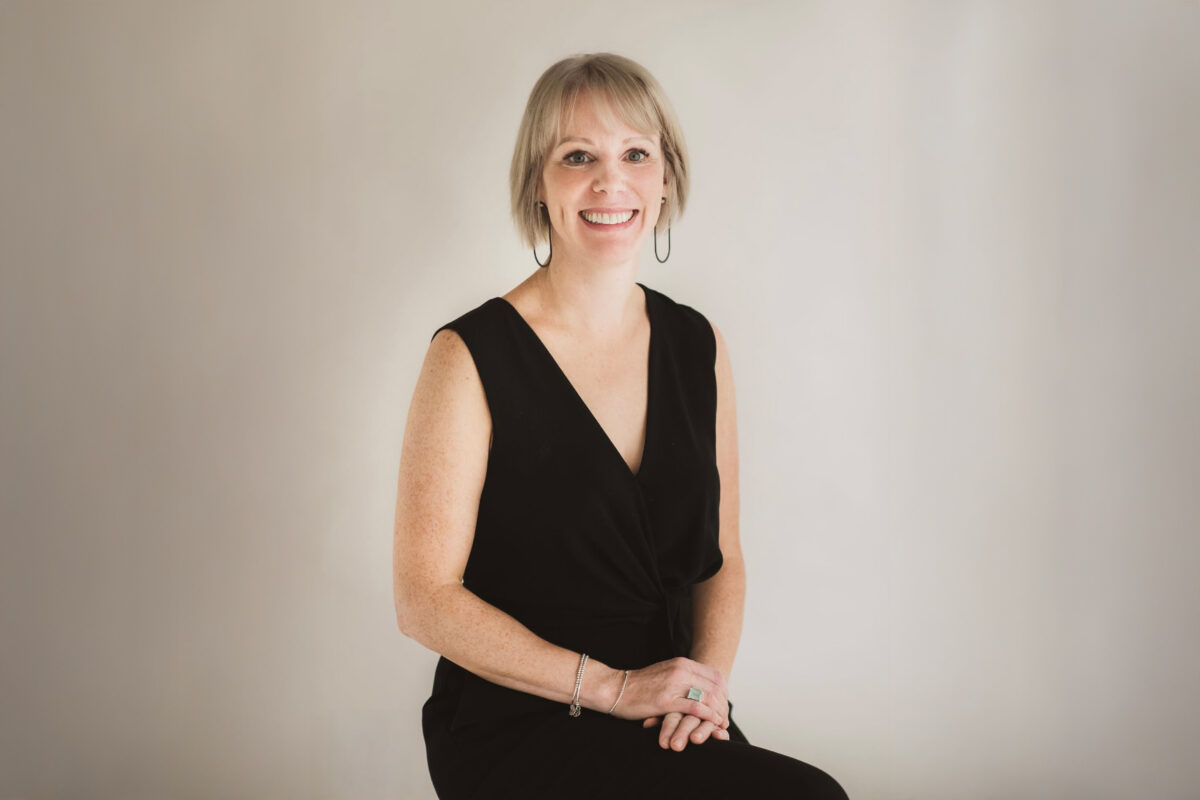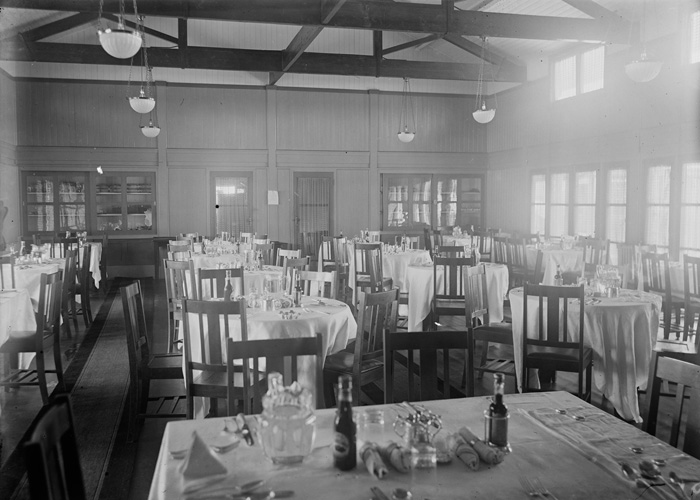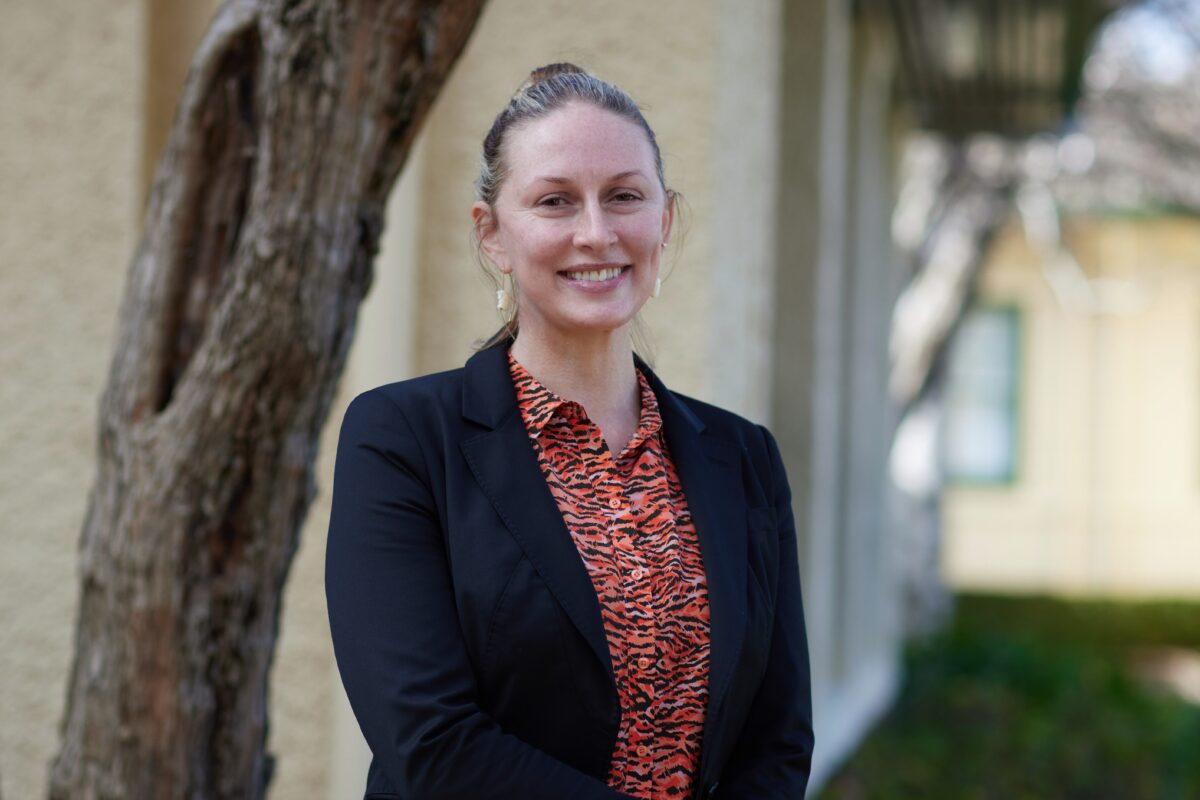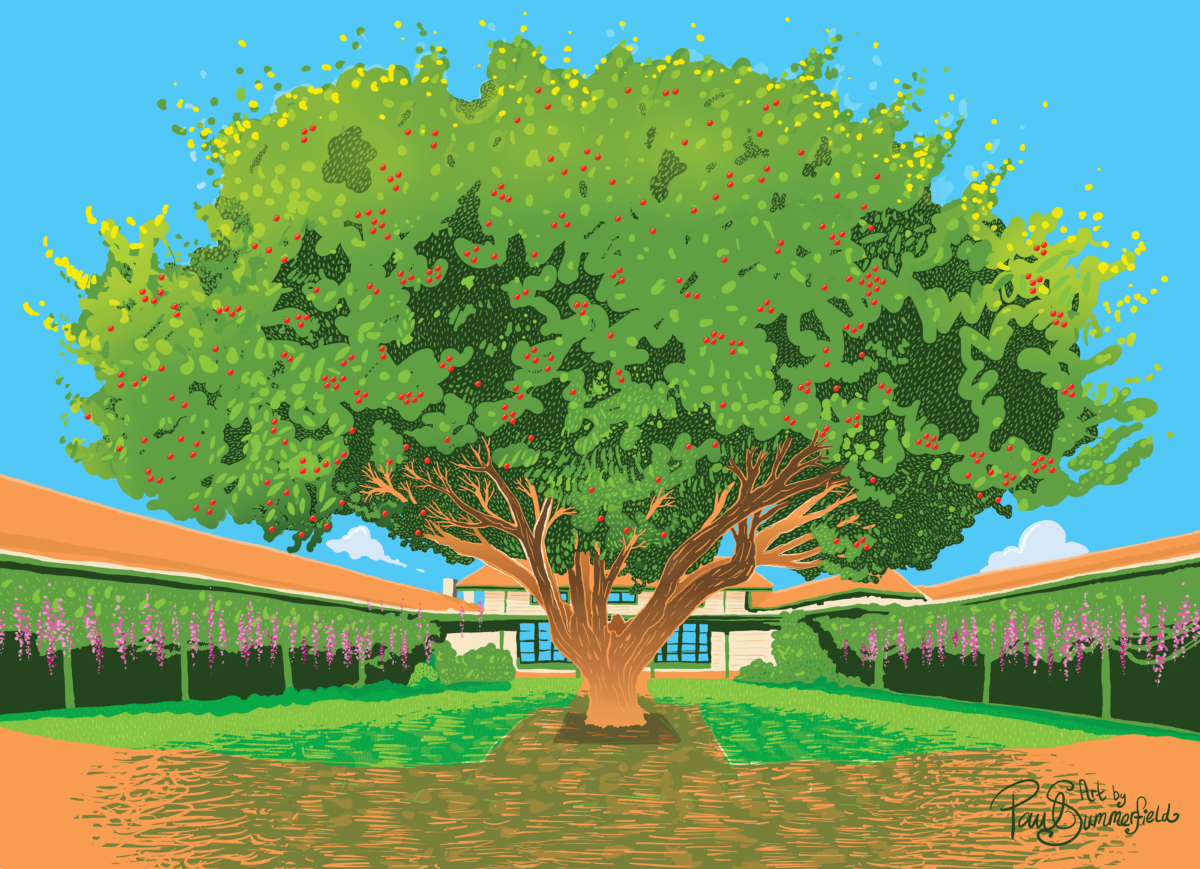Gorman Stories: Where the Nice Girls Stayed
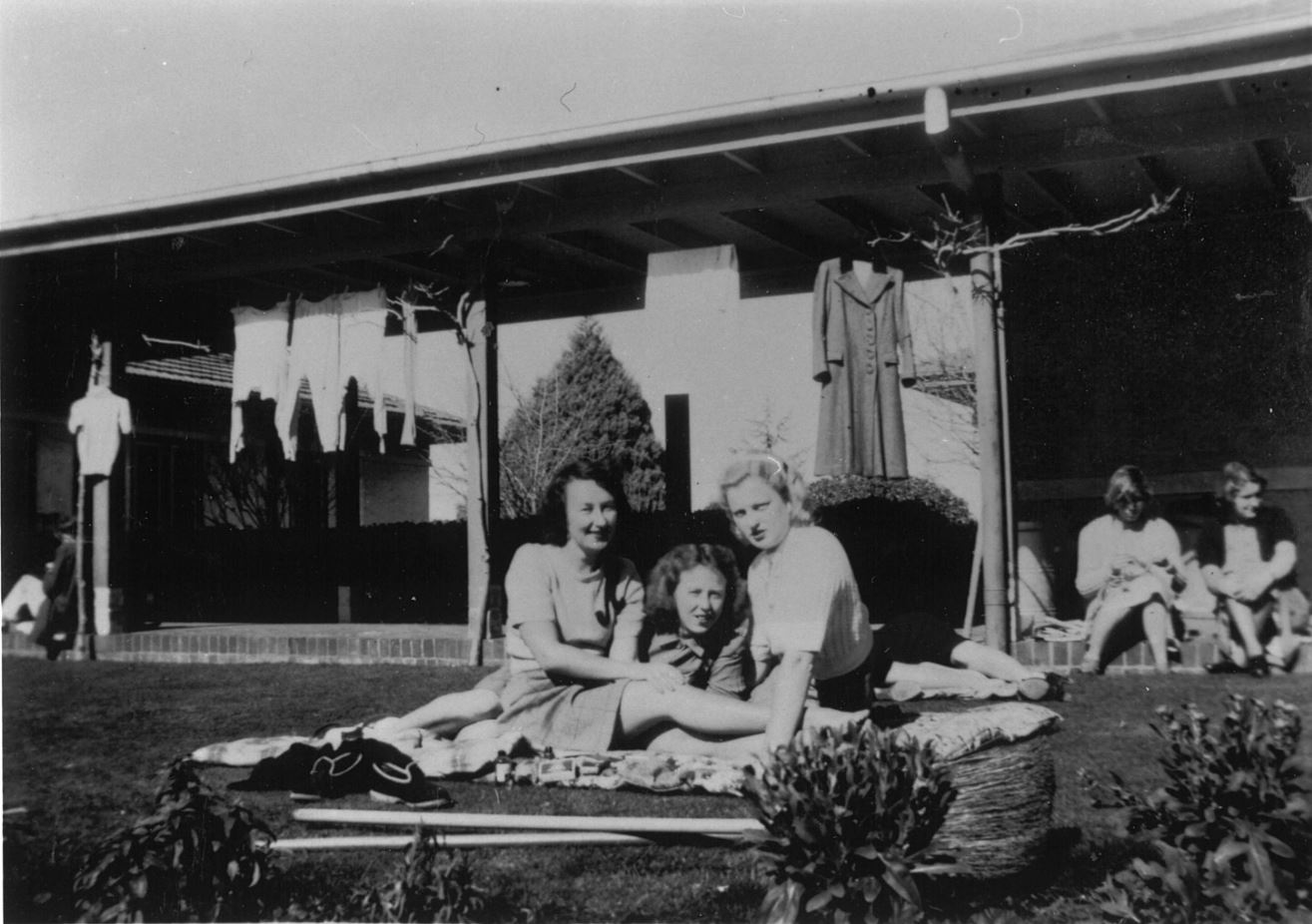

July 2025
Article from The Canberra Times, 24 August 1991.
By Claire Tedeschi
Jehanne Thelland is convinced it housed only the “nicest type of girl”. Valerie Hodge remembers with a chuckle the time she was almost caught with a bloke in her room. Honor Crawford finds the remembering, and the not remembering, all rather depressing.
To those of us who have only lived in Canberra for a short time, Gorman House is the bohemian equivalent of the Jamison Trash ‘n’ Treasure – an atmospheric site for a Saturday morning market and a snack. It’s just about the only permanent venue for Canberra’s fringe theatre, dance and art.
On Sunday, November 24, Gorman House will receive a group of visitors who knew the old buildings, and Canberra, before they were given a fresh coat of paint. But while the city of their memories may have less gloss, it is charged with the exhilaration and the promise of a pioneer capital.
The first reunion of former residents of Gorman House is being organised by the secretary of the current establishment, Sarah Wilson. Sarah, 20, says it’s been great fun slowly reconstructing the past with one name after another, coming to her by phone, by mail and through neighbours and friends.
“It’s funny to think”, she told me, “That a few months ago I thought I was a freak to have grown up here. I’ve enjoyed doing this so much. Some days I go home with a sore belly, I’ve been laughing so hard at the stories.”
Tales of trickery, tomfoolery and men climbing out of windows give the impression that, for some of its inmates, Gorman House was a kind of public-service St Trinian’s. Others recall only the welcoming pool of friendship and support in a strange city, far from home.
In a nutshell, the heritage booklet says that Gorman House was built in 1924 as a hostel for Commonwealth Public Servants. Named after the ACT’s pioneer administrator, Clarence Gorman, the hostel first accommodated married couples and single guests with separate wings for men and women.
In the mid-’30s, when the number of female workers in Commonwealth departments was growing rapidly, male residents were asked to seek alternative accommodation, and Gorman House became a ladies-only hostel.
In 1949, men were readmitted into Gorman House and it continued functioning as a unisex public service hostel until its closure in 1972. It has since served as the Australian Retirement Benefits Office and the Commonwealth Police Training Academy, before its current incarnation as a community arts centre.
Most of those who attended the first meeting of the Gorman House Ex-residents Committee last week said they hadn’t been in the place for decades. It took a little while for the ice to break but, before long, faces and names became familiar, and a half century of stories began filtering out.
Since the reunion item appeared in the Fridge Door last month, the list of ex-residents has more than doubled to 170. The committee says that’s just a start as almost 3000 people moved in and out of the hostel over its 48 years of operation.
Dorothy Power and Elizabeth Brown moved to Canberra together from Hobart when they were 21. They shared a room at Gorman House just after the war. Like many former residents, Elizabeth married a local boy and stayed in the ACT. Dorothy met her husband and settled interstate but has retired back to Canberra. The two women have been best friends all the while.
“It was a huge step for us to lake when we decided to ask our fathers to allow us to take up the Government’s offer to pay our fares and move to Canberra,” Elizabeth laughed. “It was a great adventure.”
Marj Hourigan and her sister, orphaned as children, came from Newcastle in the late ’30s. They were just 15 and 16 when they moved in. “It was such a friendly place. We had never been happier.”
Marj remembers the cold winters in Gorman, and the undercover ploys to cope with them. “As we had to pay for our own heating, it was always a toss-up in winter whether to go broke or freeze until we discovered a way of connecting the radiator into the light socket. Everyone used to plug it in properly until about 9 or 10pm, then switch it over and keep it blazing for the rest of the night.”
The heaters were also useful, she recalls as an afterthought, for cooking up toast and mushrooms for supper.
The reputed disciplinary code of Gorman House managers brings everyone’s memory to life. These were times when girls were supposed to be virtuous. Or so their parents thought. And parents were always just a postage stamp away from summoning them home.
Areta McCulloch was one of few residents who had access, through her work, to blotting paper. It was the perfect thing for blocking the view of curious eyes through the glass-topped doors of Gorman House. Areta wielded some power and influence in those days.
“I remember Mrs Hicks [the manager] knocking at my door at mid night one night,” Valerie Hodge winces. “She bellowed, ‘Do you have a man in your room and does he intend staying the night?’. And I squeaked back, ‘Oh no, Mrs Hicks. Wherever would I put him?'”
Kath Bourke, one of Canberra’s most dedicated social welfare activists and a former resident of Gorman House, says that not only do the stories of these men and women illustrate the history of the old hostel, but they provide the human foundation for the development of the Territory.
“These were Canberra’s pioneers. They came to this place when it was nothing but a few buildings.
“We were just a group of expectant young girls, but had an enormous commitment to each other, to Australia during the war and, ultimately, to the development of this city as a home for our children and grandchildren.”
The Gorman House ex-residents’ reunion will take the form of an informal buffet luncheon. The cost is yet to be set, depending on the so-far unsuccessful hunt for modest sponsorship.



